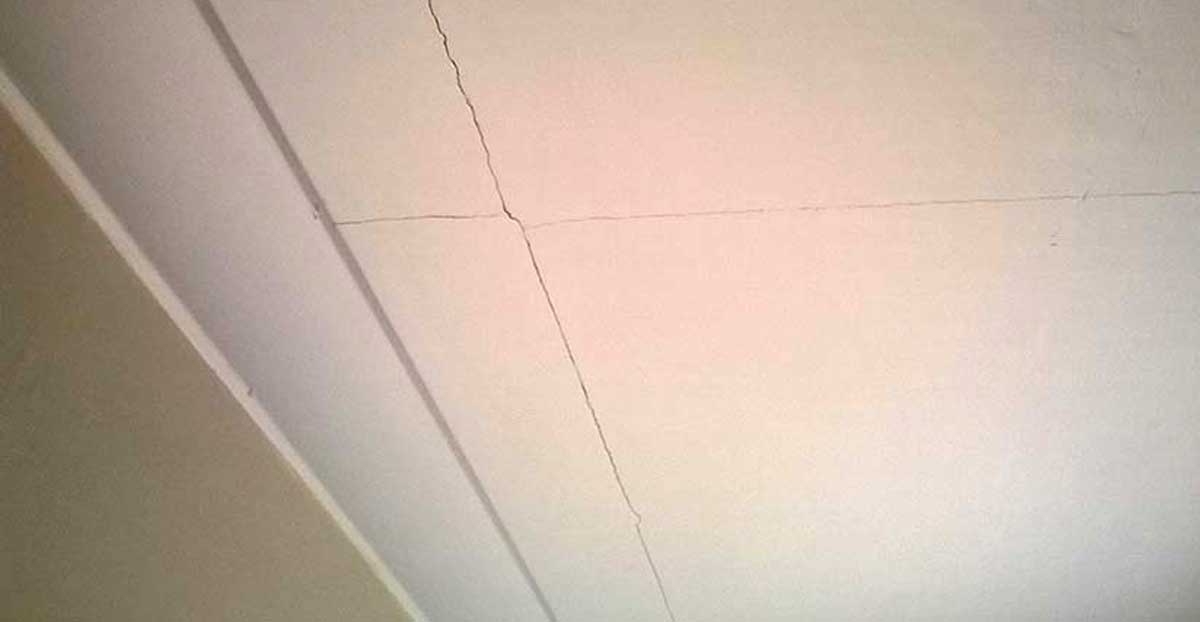How Serious are My Ceiling Cracks?

You’re inside your home, relaxing on the couch when you look up and notice cracks in your ceiling.
Before you start to panic, know that many homes have ceiling cracks caused by a home’s natural settling. As such, not all ceiling cracks are problematic – some are merely age-related. Here’s how to determine whether your ceiling cracks are caused by structural damage or are purely cosmetic.
Inspect the Cracks
The size, direction, location and colour of a ceiling crack can provide a lot of clues about whether your ceiling cracks are severe or not. In general, cracks more substantial than 1/16 inches wide are indicative of structural damage.
Spiderweb cracks are a common type of crack caused by a home’s natural ageing process. Other than the ceiling, this type of crack can be found on walls, floors, grout joints and concrete slabs and, if small, are mainly cosmetic in nature. Use a thin layer of drywall compound to conceal this type of blemish.
Matching vertical cracks are located along the same line in both the ceiling and down the wall. Normally caused by a weak wall stud or the settling of a home over time, matching vertical cracks can be severe and need to be addressed by a professional.
Horizontal cracks between interior walls and the ceiling can indicate truss uplift. To repair this issue permanently, the drywall panels need to be attached to clips or blocks on top of interior wall plates instead of nailed or screwed to the trusses.
Discoloured cracks are typically caused by a moisture problem such as an overhead leak. The cause of the leak needs to be determined before a repair is completed.
When cracks are located along the middle of the room, or there are wide, long and multiple cracks, a structural issue is normally to blame and should be addressed immediately.
Inspect the Crack in Ceiling
Sometimes in homes with plaster ceilings, cracks can be caused by moisture and movement. New plaster and paint can be used to repair these commonly occurring hairline cracks. If these cracks are wide, then the lath system below the plaster may be failing. If that’s the case, drywall should be put in place of the plaster.
If your ceiling is bowing or sagging, it requires immediate attention. Normally an indication of a structural problem, large cracks on a bowed ceiling can be caused by heavyweight from the floor above, incorrect removal of a load-bearing wall or some other type of structural damage.
As a result, the home’s joists can weaken, the ceiling can begin to sag and cracks can form. This is a serious problem that requires a reputable professional to inspect and remedy as soon as possible.
Ask the Professionals about Your Ceiling Cracks
One thing’s for sure when it comes to ceiling cracks: there’s no time to waste if they are related to structural damage.
As a foundation repair specialist, we specialize in repairing cracks, buckling walls and more. We know the best way to remedy your ceiling crack situation to ensure your home’s supports remain strong and stable. Contact us today for more information about how we can repair your ceiling cracks!